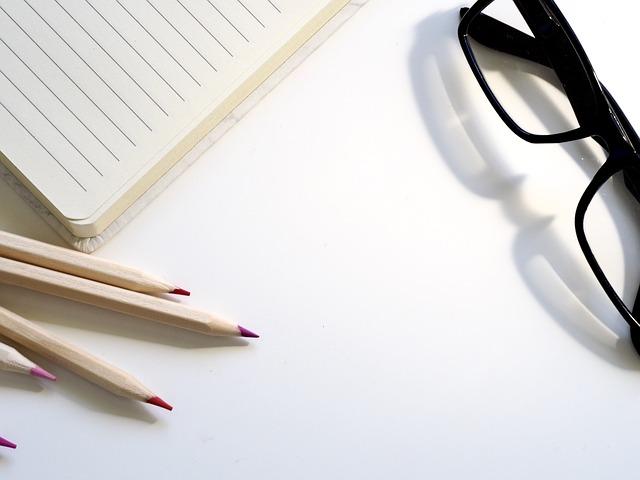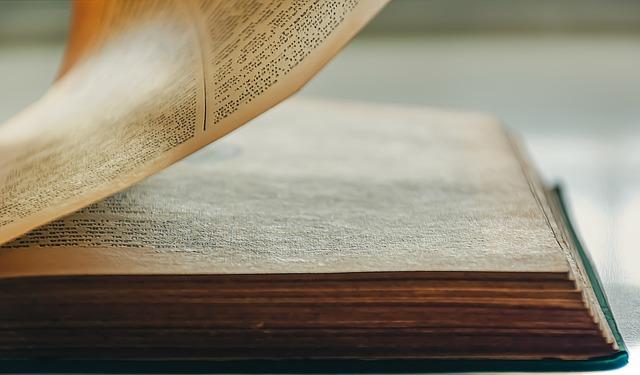Are you looking to elevate your website’s user experience and drive more conversions? Look no further than the power of persuasive copywriting! Crafting thoughtful and compelling content not only captures users’ attention but also guides them through their journey on your site. In this article, we’ll explore how to use copywriting to enhance user experience and ultimately boost your business’s success. So buckle up and get ready to learn how to make your website stand out with persuasive copy!
Contents
- Crafting Compelling Headlines
- Understanding User Behavior for Effective Copywriting
- Unlocking the Minds of Your Audience
- Utilizing Emotional Triggers in Your Copy
- Creating Clear Call-to-Actions
- Simplify Complex Information for Better User Experience
- Testing and Iterating Your Copy for Optimization
- Incorporating Storytelling Techniques for Engaging Content
- Frequently Asked Questions
- Wrapping Up
Crafting Compelling Headlines
Crafting a compelling headline is crucial when it comes to grabbing the attention of your audience. A well-crafted headline can make the difference between someone scrolling past your content or stopping to read more. Here are some tips to help you create headlines that will captivate your audience:
- Keep it short and sweet. Aim for around 6-8 words to ensure your headline is easily digestible.
- Use power words to evoke emotion and curiosity. Words like “amazing,” “unbelievable,” and “essential” can draw readers in.
- Be specific and clear about what your content is offering. Vague headlines can confuse readers and make them less likely to click.
Remember to test out different headlines and see what resonates best with your audience. A catchy headline can significantly impact the success of your content, so take the time to craft something that will draw readers in and keep them hooked.
Understanding User Behavior for Effective Copywriting
Unlocking the Minds of Your Audience
Understanding user behavior is key to crafting copy that truly resonates with your target audience. By delving into the psychology behind consumer actions, you can create content that speaks directly to their needs and desires. Utilizing tools such as heatmaps, scroll maps, and user feedback can provide valuable insights into how your audience interacts with your website or product.
One effective strategy is to create buyer personas based on demographic information, behavior patterns, and motivations. **By tailoring your copywriting to these personas**, you can address their pain points and offer solutions that truly speak to their interests. Additionally, analyzing user trends and engagement metrics can help you identify areas for improvement and optimize your copywriting strategy for maximum impact.
Utilizing Emotional Triggers in Your Copy
In the world of copywriting, tapping into the emotions of your audience is key to creating compelling and impactful content. By understanding and utilizing emotional triggers, you can connect with your readers on a deeper level and drive them to take action. Here are a few ways to effectively incorporate emotional triggers into your copy:
- Use sensory language: Appeal to the senses of your audience by incorporating words that evoke strong emotions. Descriptive language can paint a vivid picture in the minds of your readers and make your copy more engaging.
- Tell a story: Stories have a powerful way of evoking emotions and creating a connection with your audience. By weaving narratives into your copy, you can elicit feelings of empathy, nostalgia, or inspiration, which can compel readers to engage with your message.
By incorporating emotional triggers into your copy, you can create a deeper connection with your audience and motivate them to take the desired action. Remember to understand your audience, choose the right emotional triggers, and craft your content in a way that resonates with your readers on a personal level. With the right approach, your copy can become a powerful tool for driving conversions and building lasting relationships with your audience.
Creating Clear Call-to-Actions
Having a clear call-to-action (CTA) is crucial for driving engagement and conversions on your website. When creating a CTA, it’s important to keep it concise and to the point. Use action-oriented language that tells users exactly what you want them to do. For example, instead of saying “Learn More,” try “Click Here to Learn More” for a more direct approach.
Another important aspect of creating clear CTAs is to make sure they stand out visually on your website. Use contrasting colors and bold fonts to draw attention to your CTAs. Additionally, consider placing them in strategic locations on your website where they are easily accessible to your users. Remember, the goal is to make it as easy as possible for users to take the desired action, whether it’s signing up for a newsletter, making a purchase, or scheduling a consultation.
Simplify Complex Information for Better User Experience
When it comes to designing user experiences, it’s crucial to simplify complex information to ensure that users can easily navigate and understand the content on your website or app. One way to achieve this is by breaking down large chunks of text into smaller, more digestible pieces. By using bullet points or numbered lists, you can help users quickly scan and locate the information they need. This not only improves the overall user experience but also increases the likelihood of users engaging with your content.
Additionally, incorporating visuals such as infographics or charts can further enhance the user experience by providing a visual representation of data or information. Visual elements not only break up text-heavy pages but also help users process and retain information more effectively. When presenting complex information, remember to use clear and concise language. Avoid using technical jargon or complex terminology that could confuse users. Instead, opt for plain language and straightforward explanations to ensure that all users can easily grasp the content.
Testing and Iterating Your Copy for Optimization
When it comes to optimizing your copy, testing and iterating are key components in achieving success. By continuously monitoring and adjusting your content based on performance metrics, you can ensure that your message resonates with your target audience. Utilize A/B testing to compare different versions of your copy to see which one performs better. This can help you understand what elements are most effective and guide your future content creation efforts.
In addition to A/B testing, consider conducting user surveys or focus groups to gather feedback on your copy. This can provide valuable insights into how your audience perceives your messaging and help identify areas for improvement. By actively seeking feedback and making iterative changes based on data and feedback, you can fine-tune your copy to better align with the preferences and needs of your audience. Remember, optimization is an ongoing process, so don’t be afraid to experiment and continue refining your copy over time.
Incorporating Storytelling Techniques for Engaging Content
Storytelling is a powerful tool that can captivate audiences and make your content more engaging. By incorporating storytelling techniques into your writing, you can create a deeper connection with your readers and keep them coming back for more. One storytelling technique you can use is to create a strong narrative arc. This means introducing a compelling conflict or problem early on in your content and building tension as you work towards a resolution. This will keep your readers hooked and eager to find out how the story unfolds.
Another effective storytelling technique is to use vivid imagery and descriptive language to paint a picture for your readers. By using sensory details and emotive language, you can transport your audience into the world you’ve created and evoke a strong emotional response. This will help to make your content more memorable and impactful. Additionally, incorporating personal anecdotes and real-life examples can help to humanize your content and make it more relatable to your audience. By sharing personal experiences or stories, you can forge a stronger connection with your readers and establish credibility and trust.
Frequently Asked Questions
Q: What is copywriting for UX?
A: Copywriting for UX is the practice of using persuasive and clear language in digital products to enhance the overall user experience.
Q: Why is copywriting important for user experience?
A: Well-written copy can help guide users through a website or app, clarify confusing information, and persuade users to take action.
Q: How can copywriting improve user engagement?
A: By using engaging and relatable language, copywriting can capture the user’s attention and keep them interested in the product or service being offered.
Q: What are some key tips for effective copywriting for UX?
A: Some key tips include using language that is easy to understand, focusing on benefits rather than features, and using a conversational tone to connect with users.
Q: How can copywriting help with conversion rates?
A: By crafting compelling calls-to-action and persuasive messaging, copywriting can encourage users to take specific actions, ultimately leading to higher conversion rates.
Q: What are some common mistakes to avoid in copywriting for UX?
A: Some common mistakes to avoid include using jargon or complex language, being too verbose, and not considering the user’s perspective when crafting copy.
Q: How can businesses implement copywriting for UX effectively?
A: Businesses can start by conducting user research to understand their target audience, then tailor their copywriting to address their needs and pain points effectively.
Wrapping Up
In conclusion, by incorporating persuasive copywriting techniques into UX design, you can greatly enhance the overall user experience.







